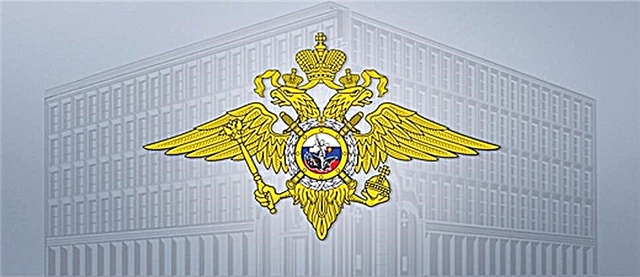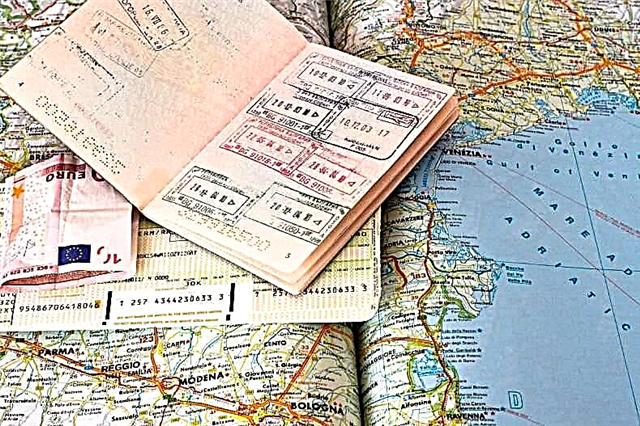The historical heritage for the Germans is one of the priceless assets of the nation. The inhabitants of this country are very proud of their architectural monuments, works of literature and musical art, which glorified their homeland, great people who worked on its territory, leaving an imperishable mark in history. A special place is occupied by museums in Germany, which have collected a huge number of unique collections, ranging from antique artifacts to works by contemporary masters. A short tour of the main expositions will allow you to draw up a tourist route around the cities of the country.

Cultural heritage of the Germans
As of 2021, there are 44 sites located in the Federal Republic of Germany on the UNESCO list of cultural heritage. Among them:
- buildings that have survived from ancient times (Trier, Porta Nigra gate);
- medieval architecture (cathedrals in Speyer, Aachen, Cologne);
- ancient castles (Wartburg);
- baroque parks and palaces (the Augustusburg palace, the Dessau-Wörlitz park, the museum of the castle of the Dukes of Württemberg);
- ancient cities as closed architectural complexes (Bamberg, Lubeck);
- landscape zones (Rhine valley).
Among the famous monuments is the picture gallery in the city of Dresden, which contains an invaluable collection of the great creations of world painting.
Many German cities can be considered open-air museums in their own right. For example, Bremen, Hamburg, Munich, Frankfurt.
Numerous local history exhibitions (for example, the Rhine State Museum in Bonn, the Saarland Museum or the Koblenz Local History Exhibition) and exhibitions devoted to the natural history of the country (Paleontological Museum in Munich) tell about the history of development and the peculiarities of the German regions.
Do not forget that Germany was one of the first in Europe to embark on the path of technological progress, so today there is a large number of various museums of cars and aviation and all kinds of technical exhibitions dedicated, for example, to the history of the steam locomotive. Particularly noteworthy are the Museum of the Achievements of Natural Sciences and Technology (Berlin), the gallery of technology in Sinsheim, the Museum of airships in Friedrichshafen.
A separate group includes expositions related to the history of the Third Reich. Numerous exhibits and documentary evidence of the events of World War II are collected in the following museums:
- "Bunker" (Berlin),
- Museum of Military Equipment (Koblenz),
- Jewish Museum (Munich, Frankfurt am Main),
- Museum of Victims of Nazism (Berlin), exhibition "Luftwaffe" (Berlin).
The German-Russian Museum "Berlin-Karlshorst", located at the site of the signing of the Act of Surrender of Nazi Germany, which, in fact, tells the whole story of one of the bloodiest wars of mankind, is of great interest to tourists.
The expositions dedicated to the great German creators: musicians, artists, engineers can also be considered unique. This also includes art galleries and painting exhibitions. You can find them not only in large cities. For example, the Art Museum in Wuppertal or the Karl Osthaus gallery in Hagen are famous for their large collection of exhibits.
What to see in Berlin
Hospitable Berlin can captivate guests of the city with visiting interesting places for several weeks.
More than 170 cultural institutions operate in the German capital. The special pride of its inhabitants is the unique “Museum Island”, on which 5 of the country's largest museums are concentrated.

So, what should be included in the mandatory attendance program:
- the famous "Bunker" - a bomb shelter built in 1943 for railway workers. In 2003, the building was bought by Christian Boros (collector of contemporary art). Today, here you can get acquainted with all the fashion trends in photography, sculpture and painting.
- Jewish Museum - its exposition tells about almost two millennia of the history of the Jewish people. The very building of the museum with the "Tower of the Holocaust" and "Garden of Exile" makes a very strong impression on visitors, about which the guides warn even at the entrance (especially women and teenagers).
- “Museum Island” - it took almost 100 years to build this unique architectural ensemble. Five museums located on the island tell about six thousand years of human history: Bode Museum, National Gallery, Pergamon Museum, New and Old Museums.
- The Technical Museum is the most interesting place in Germany for anyone interested in technology. In addition to the collection of unique exhibits, visitors will have an interactive interaction with the exhibition. Here you can see the first steam locomotives of the 19th century, rare examples of aircraft and automobile construction.
- Museum of the Prehistoric Era - here are presented the finds of Rudolf Virchow and Heinrich Schliemann, dating back to the Paleolithic era and later periods, up to the Middle Ages.
Not to be overlooked are the Allied Museum, the Hamburger Bahnhof (Museum of Modernity) and the Schwules Museum (Museum of Homosexuality), as well as the Deutsche Guggenheim and the Bauhaus Archives.
What museums are worth a look in Munich
The capital of Bavaria has gained fame as a "city of art" thanks to a large number of museums and exhibitions of national and world level. Here are collected unique ancient artifacts, works of sculpture and painting, as well as exhibits testifying to technological progress.
You should definitely visit:
- The Old Pinakothek is one of the world's largest art galleries, which contains works by artists from the Middle Ages to the 18th century. Most of the paintings were acquired by members of the Wittelsbach family, who ruled Bavaria for 700 years.
- The Bavarian National Museum is another gift to the city from the Bavarian kings of the Wittelsbach. Created in 1855. The greatest interest is aroused by the "Hall of the Celts" and the exhibition dedicated to the Great Nations Migration.
- BMW Museum - keeps exhibits from the times when the plant was engaged in the production of aircraft and brakes for trains. Opened in 1972. The museum building is a three-level structure in the form of a spiral.
- The Museum of Ethnology is one of the oldest exhibitions in Germany, which includes about 160 thousand ethnographic exhibits, objects of painting and decorative and applied art, about 10 thousand rare documentary photographs, a unique library.
- Jewish Museum - in addition to historical monuments telling about the history of the Jewish people, there is a training center, a library, and an information center for emigrants.
- Paleontological Museum - exhibits obtained as a result of archaeological excavations in Bavaria are stored here. The first exhibition was opened in 1843. Lovers of paleontology will be able to see the remains of a prehistoric elephant and the skeleton of Archeopteryx. The only thing that can be compared with this exposition is the Regensburg Historical Museum, located in an old German city, whose architectural monuments date back to the times of Ancient Rome.
Must-sees in Dresden
Another city of museums is Dresden, the cultural capital of Saxony. Situated in the Elbe Valley, calm, majestic and graceful, it attracts thousands of tourists who never cease to admire the architectural monuments and the collection of rare museum pieces.
List of must-see in Dresden:
- Picture gallery, the hallmark of which is the famous "Sistine Madonna" by Raphael. The exhibition, which was founded in the 16th century by Frederick the Wise, today ranks among the largest collections of paintings in the world.
- The Art Gallery of New Masters is a collection of works by artists and sculptors of the 19th and 20th centuries. Has been working since 1931.
- Porcelain Museum - founded in 1715. Part of the association "State Art Collections of the City of Dresden". Created on the initiative of the Elector Augustus the Strong, who called his passion for this area "porcelain disease".By 1730, it was the largest porcelain collection in Europe, and today it has the largest number of exhibits in the world.
- The Military History Museum of the Armed Forces is one of the two most famous military museums in Germany. The museum complex includes two buildings: the arsenal room, which dates from 1877, and a modern extension, the authorship of which belongs to the famous American architect Daniel Libeskind (2021).
Also of great interest are the Dresden Transport Museum, the Armory, the Zoological Exhibition and the Green Vault Museum - the largest exhibition of jewels in Europe.
In order not to miss out on something interesting, find out more about the sights of this city in the article "Dresden Museums".
The most famous museums in Germany
To have time to see all the most interesting places in Germany, you need a list of what you must see.
| Museum | How to get there | Ticket price | Opening hours |
|---|---|---|---|
| "Museum Island" | Trams М1, М4, М5 to the Hackescher Markt stop. | A ticket valid for 72 hours costs € 44 | 10.00 - 18.00 |
| Berlin | Metro - stop at Alexanderplatz. On foot - 15 minutes towards the island from the Brandenburg Gate. | ||
| Topography of Terror (Berlin) | Metro - station Potsdamer Platz or Kochstraße Light Rail - Stop Anhalter Bahnhof or Potsdamer Platz | Is free | 10.00 - 20.00 |
| Dresden Picture Gallery | Tram No. 9, 13 from the Dresden Zoo to the Dresden Pirnaischer Platz stop. | 12 euros, for tourist groups from 10 people - 11 euros. Children under 17 years old - free | 10.00 - 18.00, closed on Tuesday |
| Green Vaults, Dresden | Tram No. 1, 8, 9, 12 to the Theaterplatz stop | 12 euros, for children under 17 years old admission is free. | 10.00 - 18.00, closed on Tuesday |
| BMW Museum (Munich) | Metro - station "Olympic Park". | 10 euros; a tour of the exhibition center, museum and factory - 22 euros. | 10.00 - 18.00, closed on Monday. |
| Würzburg residence | Address Residenzplatz 2, Tor B | 7.50 euros, admission is free for children under 18. Visiting is possible only as part of tourist groups. | 9.00 - 18.00 (April - October), 10.00 - 16.30 (November - March). |
| Museum of the History of Nazism (Nuremberg) | Bayernstrasse 110 address | 6 euros, children under 17 years old - free. | 10.00 - 18.00 |
| Toy Museum (Munich) | Take the metro to the Marienplatz stop | 4 euro - adult, 1 euro - child | 10.00 - 18.00 |
| Augustinian Museum (Freiburg) | Tram number 1 to the Oberlinden stop. | 7 euros | 10.00 - 17.00, closed on Monday. |
| Volkswagen Museum (Wolfsburg) | Take the tram to the Dieselstrasse stop | 8 euros | 10.00 - 17.00, closed on Monday. |
| National Museum of Contemporary History of the Federal Republic of Germany (Bonn) | Address: Bonn, Willy-Brandt-Allee, 14. | Is free | Tuesday - Friday 9.00 - 19.00, Saturday and Sunday 10.00 - 18.00, closed on Monday. |
| German Museum of Science, Technology, Natural History and Anatomy in Munich | Metro - to Fraunhoferstrasse station, then walk 15 minutes to the island where the museum is located. | 12 euros for an adult visitor, 4 euros for children 6-15 years old, family ticket - 25 euros. | 9.00 - 17.00 |
The most unusual exhibitions of the country
Germany is able to surprise its guests not only with national galleries and museums. Lovers of everything unusual can take advantage of the opportunity to visit expositions, which in most cases have no analogues in the world.
| The Twin Museum in Solingen | Address: Bahnhofstrasse 11 | 3 euros for adults, disabled people, pupils, students - 2 euros, children under 10 years old - free | Tuesday - Sunday 10.00 - 17.00, closed on Monday. |
|---|---|---|---|
| Museum of Lies (Küritz) | Address: Am Anger 1 | 5 euros - adult ticket, 2 euros for children under 10 years old. | 10.00 - 20.00 |
| Hygiene Museum (Dresden) | Address: Lingnerplatz 1 | 8 euros | 10.00 - 18.00, closed on Monday |
| Bread Museum (Ulm) | Address: Salzstadelgasse 10 | 4 euros | 10.00 - 17.00, seven days a week |
| Sausage Museum (Berlin) | Address: Schuetzenstrasse, 70 | 12 euros, on Mondays there is a 20% discount, children under 10 years old - free. | 10.00 - 18.00 |
| Spice Museum (Hamburg) | Located in the city center. You can get there by bus number 111 or 6 to the Am Sandtorkai stop | Children 4-14 years old - 2 euros, adults - 5 euros, family - 10 euros. | 10.00 - 17.00, seven days a week from July to October. From November to June - Monday is a day off. |
If you want to visit other unusual museums in Germany, pay attention to the Museum of Chocolate, Museum of Soup, Asparagus, Potatoes. In Hamburg there is an interesting exposition of the wax museum "Panopticon", in Nuremberg - the Executioner's Museum, in Heidelberg - the Bonsai Museum.
Outcomes
Germany attracts tourists with its historical and cultural heritage. Almost every city has one or several museums, ranging from archaeological and local history to modern exhibitions. The most interesting museums are located in Dresden, Munich and Berlin.











